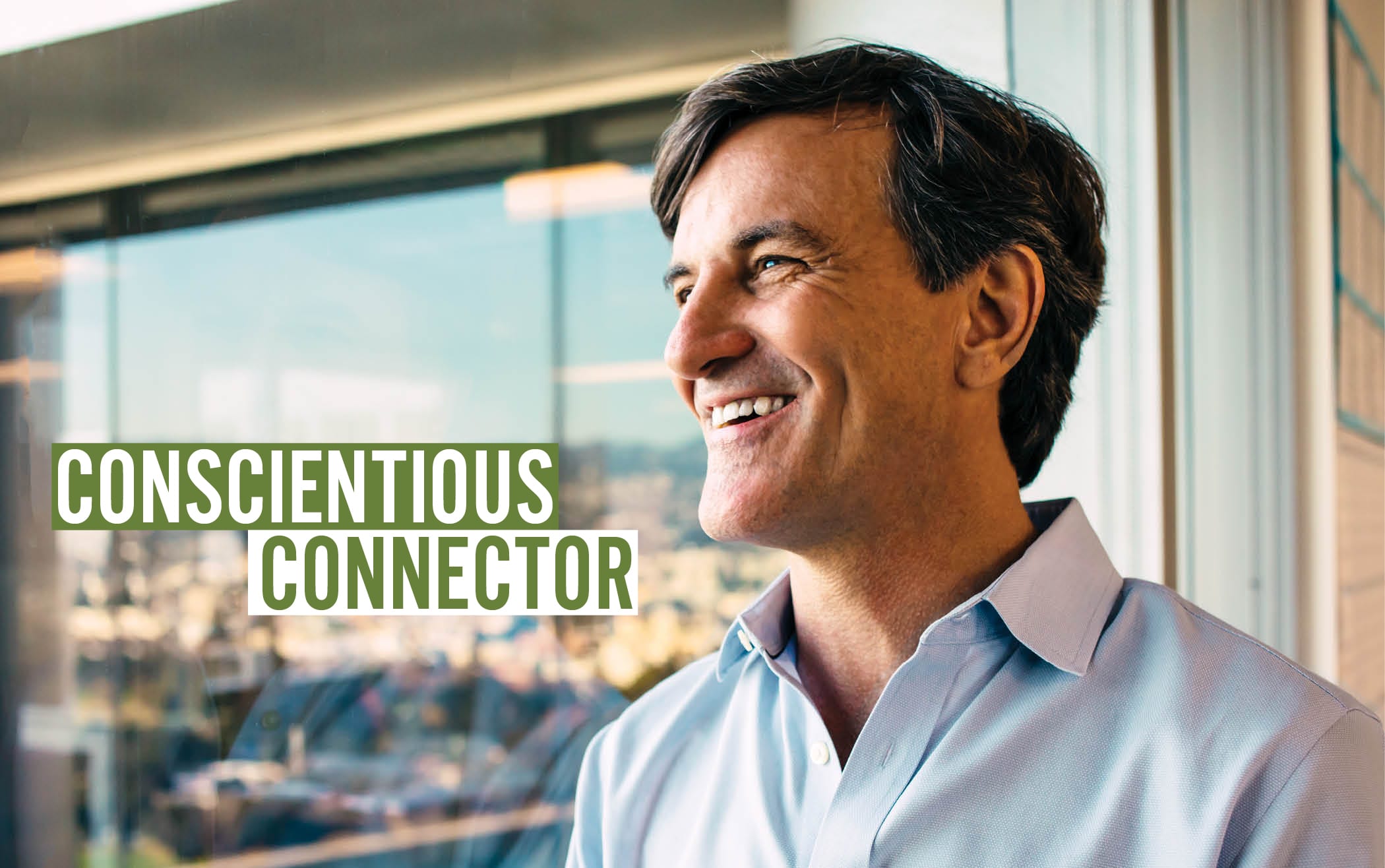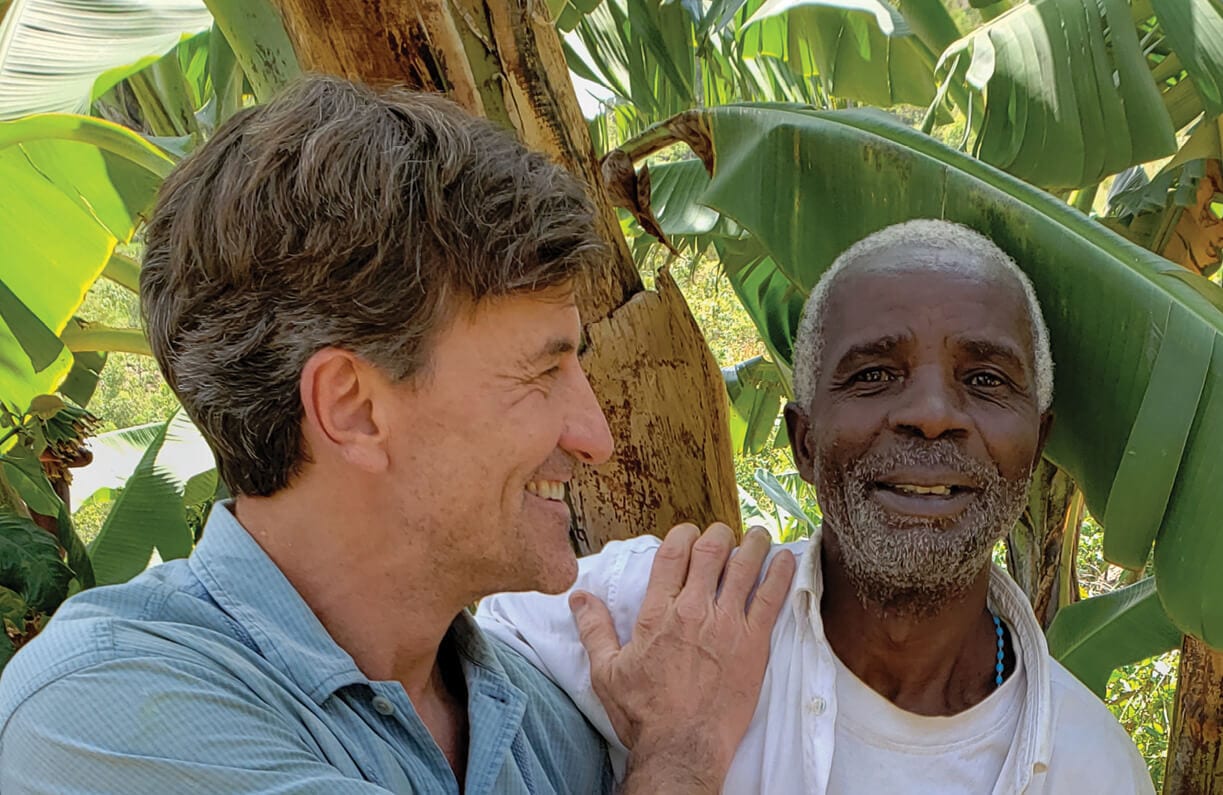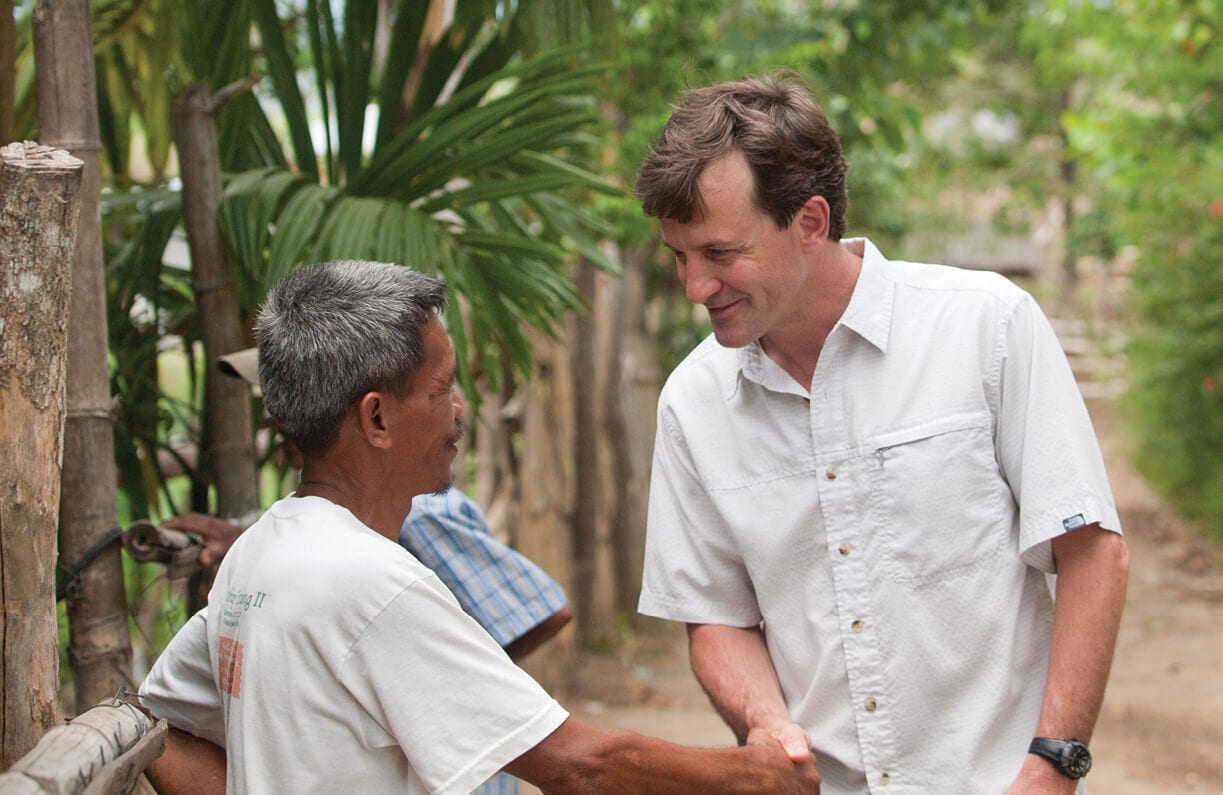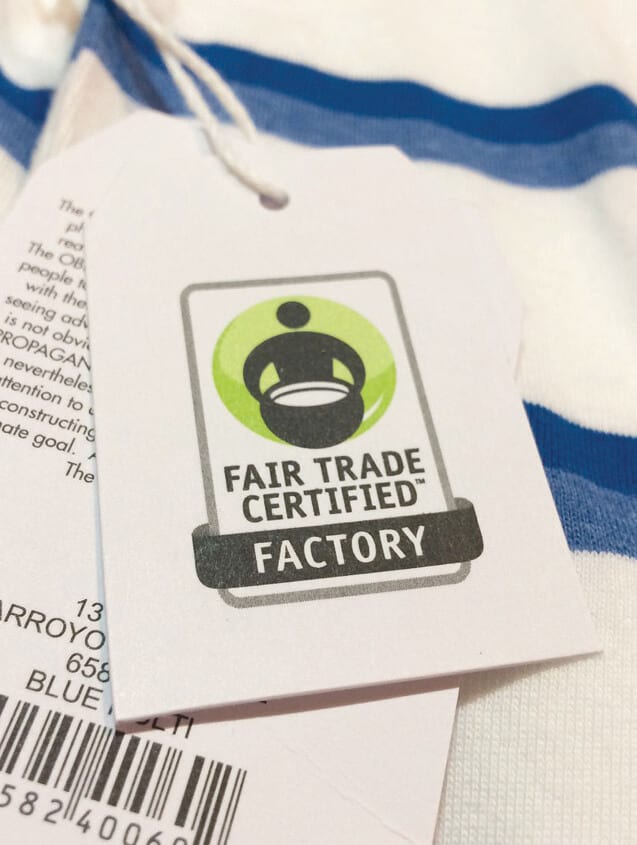How We’re Duped by Data
Cover Story
Haas News
Table of Contents
Fair Trade USA founder and CEO Paul Rice, MBA 96, creates positive social and environmental change for everyone along a supply chain.

Paul Rice, MBA 96, has always questioned the status quo. Upon graduating from Yale in 1983 as a self-described “Cowboy from Austin,” he eschewed more traditional career paths and moved to Nicaragua, drawn to lend a hand during the country’s tumultuous revolutionary years.
The arena Rice identified as a potential locus for radical societal transformation—agriculture—was perhaps not the obvious place to start. But he’d grown frustrated with what he saw as the shortcomings of international aid programs to create lasting and sustainable change for rural Nicaraguan farmers. Out of that frustration grew his decision to establish the country’s first Fair Trade coffee co-op in 1990, which started with 24 farmers and grew to include more than 3,000 families in three years.
In the process, Rice discovered a foundational passion that has led him to winning this year’s Leading Through Innovation Award: a belief that profitability and sustainability can go hand-in- hand and that corporations can and indeed must play a role in the greater social good.
In the mid-’90s, when Rice returned to the U.S. to start his studies at Haas, there was a vibrant Fair Trade movement in Europe, connecting conscientious buyers with sellers in developing countries to equalize access to markets and consumers. But there was no American equivalent, making the U.S. ripe for a Fair Trade revolution. “I came back to the U.S. knowing I wanted to set up Fair Trade USA,” says Rice. “I was very focused.”
More than two decades after Rice established Fair Trade USA in Oakland, California, that focus has resulted in the creation of an organization that expands sustainable development and community empowerment globally, through an equitable trade model that benefits producers, consumers, industry, and the planet. In 2018 alone, nearly a million farmers and workers in 47 countries were empowered to reach more favorable terms with their trading partners because they were part of the Fair Trade USA system of standards and Community Development Funds.
The main tool Fair Trade USA uses to promote sustainable livelihoods and environmental protection is its cheerful green, white, and black Fair Trade CertifiedTM seal, which a 2018 survey showed is recognized by 63% of U.S. consumers. When a product carries the seal, it means producers are upholding rigorous standards around workplace safety, sustainable incomes for employees, and environmental protection, all of which are regularly audited by Fair Trade USA.
U.S. retail sales of Fair Trade products have grown to some $6 billion, with more than 1,250 businesses across 30 product categories—food and beverage, apparel, home furnishings, and more— committed to Fair Trade standards, including market leaders like General Mills, Patagonia, Whole Foods, and Target.

Another measure of Fair Trade’s direct impact is social return on investment (SROI), the dollars generated for farmers and workers with each dollar that Fair Trade invests. According to Rice, for every $1 Fair Trade USA puts into the market and the movement, they generate $4 in increased wealth for farmers and workers. Since its inception, Fair Trade USA has generated some $610 million in additional income to farmers and workers in 47 countries—allowing them to significantly improve their livelihoods.
“For an organization whose mission is to help alleviate poverty, to be able to create an engine of wealth creation for poor people around the world is really quite remarkable,” says Rice.
Indeed, Rice and his organization have created lasting and meaningful value—for workers and their families who now have improved conditions in fields and factories and better access to education and healthcare, for fragile ecosystems strengthened by Fair Trade USA protections, and for businesses and retailers benefiting from increased supply chain transparency and sustainability.
But Fair Trade’s influence doesn’t end with Fair Trade Certified products. The 501(c)(3) nonprofit organization has played a meaningful role in the larger global movement toward conscious capitalism. “We’re a small part of the meta movement that says that profitability and sustainability can go together,” says Rice. He points to other certifications and standards like “non-GMO” and “B Corps” as a ripple effect over a winner-take-all mentality. The success of Fair Trade is a signal to the larger market, says Rice, that “a shared-value model isn’t a crazy dream. It’s real, it’s achievable, and it will be table stakes for business going forward.”
In part, that’s because of growing consumer demand for Fair Trade products—the “conscious consumer movement” that is the necessary condition for success of conscious capitalism. “Enlightened capitalist leaders wouldn’t be enough,” says Rice. “You need consumer support.”

By any measure, the conscious consumer movement is growing rapidly. A 2015 study by Cone Communications found that 91% of Millennials (ages 23–38) are willing to switch brands to purchase a product with a social or environmental benefit. And of course, Gen Z (ages 22 and under) has grown up with the Fair Trade seal adorning their everyday products, informing their purchasing choices and influencing their buying behaviors. A 2015 Nielsen study found that 72% of Gen Z respondents are willing to spend more money on goods and services from companies committed to positive social and environmental impact—up from 55% the year prior.
“Gen Z gives us a glimpse of our future,” says Rice, whose own daughter is a member of that cohort. “Twenty years into this venture, I feel more fired up than ever to keep going, because I feel so inspired by all the enlightened consumers out there.”
That said, Fair Trade is operating in an era in which the U.S. government is systematically deregulating environmental and workplace protections. Rice believes that with the private sector and consumers reaping the benefits of improved supply chain transparency and sustainability, the Fair Trade movement is strong enough to survive regressive federal policies.
“The direction of the U.S. government with the environment and labor is discouraging, but it underscores why businesses and consumers have to step into the breach,” says Rice. “I don’t see regulatory measures solving the problem of sustainability and responsibility in the near term. For the next 20 or 30 years, market-based approaches will be more sustainable and more scalable.”
Ironically, some industry observers point to the proliferation of parallel Fair Trade labels as a threat to the movement, saying it sows consumer confusion and creates overlapping, sometimes contradictory standards that hinder producers.
But Rice sees this as a net positive. “Sure, there may someday be a shakeout or consolidation between the various labels,” he says. “But I think it’s great that consumers have more opportunities to educate themselves about all the different dimensions of sustainability.”
As for the power held by consumers to make a difference, says Rice, “We don’t have to wait four years to cast our votes. We have a chance to vote for a better world every time we go to the store.”
This year’s Leading Through Innovation Award winner isn’t looking backward. “I like the adage, ‘What got you here won’t get you there,’” says Rice, noting that the success of Fair Trade’s past 21 years will not be replicable unless the organization evolves its existing model. On top of Rice’s to-do list? More innovation with technology.
“The auditing industry is very labor-intensive; the way we engage with farmers, factories, brands, and consumers could be called ‘artisanal,’” says Rice with a laugh. Fair Trade is investigating ways to automate its verification and auditing processes, so that it can scale with less cost.
“We’re thinking about blockchain and also whether we could crowdsource the audit by engaging with workers via cell phones on a real-time basis,” says Rice. “Technology will dramatically enhance the value we’re delivering to industry in terms of data and impact information.”

Gen Z (ages 22 and under) has grown up with the Fair Trade seal adorning their everyday products, informing their purchasing choices and influ- encing their buying behaviors.
Rice also sees the value in using technology to provide consumers a more reassuring experience, for end-to-end supply chain transparency. “In an age of Facebook, why can’t we friend our farmers?” Rice asks. “I want to create a platform where you can get a much more interactive experience with the workers and farmers making the product you love.”
And of course, there are plans to continue to expand the number of products bearing the Fair Trade seal. Just last summer, Fair Trade USA and Chobani announced a partnership to create and launch the first Fair Trade dairy standard. “Chobani products may carry the Fair Trade Certified label as early as 2021 to help address the awful labor conditions in the dairy industry,” says Rice. “We’re excited about creating a ripple effect that will bring along other brands.”
Rice, who finds winning this year’s Leading Through Innovation Award “deeply humbling,” credits Haas for giving him the analytical tools and knowledge that enabled him to create a global network that “puts people and planet first.”
In 2014 Rice was named a Berkeley Haas Executive Fellow, which gives him the chance to work closely with current students. And Rice hopes that those students will use their Haas-nurtured skillsets to further his pioneering work.
“I see so much evidence to support this belief that conscious capitalism and conscious consumerism are here to stay. The question for current students isn’t ‘What is the future we’re all heading for?’ It’s ‘How long is it going to take us to get there?’” Adds Rice, “The pace of change is in their hands.”
Posted in: